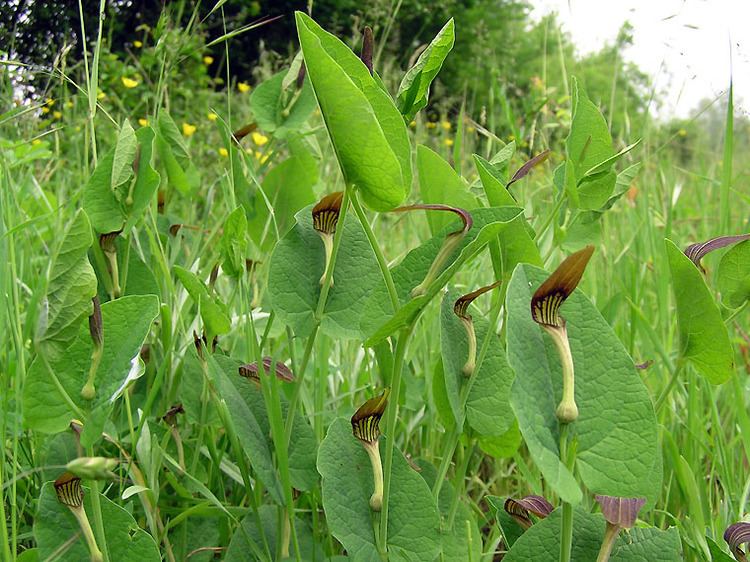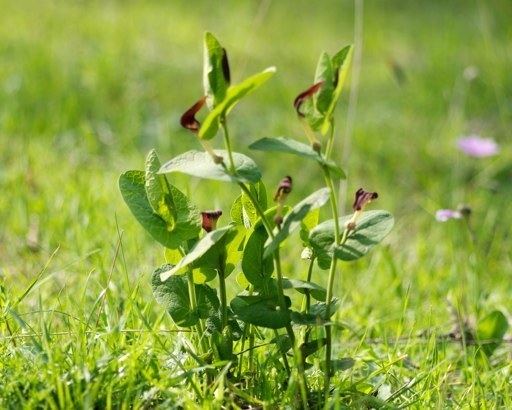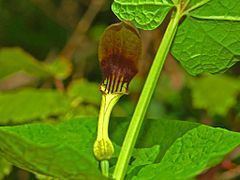Rank Species | Genus Aristolochia Higher classification Aristolochia | |
 | ||
Similar Aristolochia, Aristolochia pistolochia, Aristolochiaceae, Aristolochia clematitis, Aristolochia baetica | ||
Aristolochia rotunda, commonly known as smearwort or round-leaved birthwort, is a herbaceous perennial plant native to Southern Europe.
Contents
Etymology

The genus name Aristolochia derives from the Greek words αριστος (aristos) meaning "the best" and 'lochéia' meaning ' childbirth', for the old use in promoting uterine contractions. The Latin name of the species rotunda refers to the rounded shape of the leaves.
Botanical description

The root reaches 5–25 centimetres (2.0–9.8 in) in length and sometimes seems out of proportion to the slenderness of the plant. The unbranched stem has alternate, large, smooth-edged, heart-shaped and stalkless leaves that clasp the stem with enlarged, basal lobes. The solitary flowers have an unpleasant odor and they are tubular, about 2.5–5 centimetres (0.98–1.97 in) long, yellowish-green with a prominent, dark-brown or dark purple flap, both arising from the axils of the leaves. The flowering period extends from April through June.
Reproduction

The flowers of Aristolochia rotunda are hermaphrodite are pollinated by midges and other small insects (entomophily), attracted by the smell and by purple-brown color of the flowers. The small hairs inside the cup prevent the flies to come out and fly away. After the pollination these hairs sag and allow them to escape.

This species is the only host plant of the caterpillars of a beautiful uncommon butterfly (Zerynthia polyxena). Eating the leaves of the plant the larvae this insect ingest aristolochic acid that make them poisonous to birds.
Distribution
This plant is common in Mediterranean countries. It is rarely naturalized in the British Isles.
Habitat
These plants occur along the banks of canals, edges of ditches and fields, sides of roads, meadows, slopes and forests. They prefer chalky soils and moist, shady areas, at an altitude of 0–800 metres (0–2,625 ft) above sea level.
Chemical constituents
A. rotunda contains aristolochic acids which are carcinogenic, mutagenic, and nephrotoxic.
